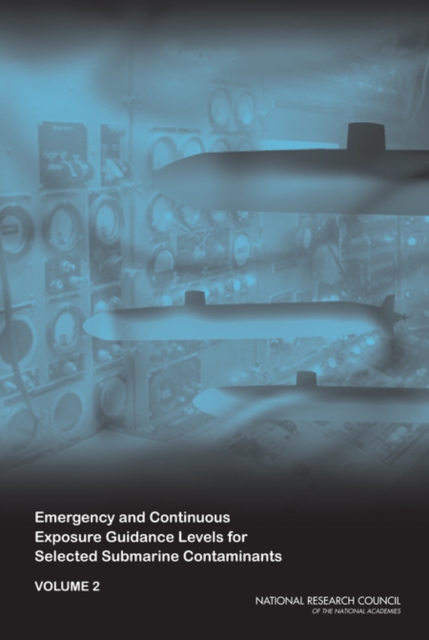
Emergency and Continuous Exposure Guidance Levels for Selected Submarine Contaminants : Volume 2 Paperback / softback
by National Research Council, Division on Earth and Life Studies, Board on Environmental Studies and Toxicology, Committee on Toxicology, Committee on Emergency and Continuous Exposure Guidance Levels for Selected Submarine Contaminants
Paperback / softback
- Information
Description
U.S. Navy personnel who work on submarines are in an enclosed and isolated environment for days or weeks at a time when at sea.
To protect workers from potential adverse health effects due to those conditions, the U.S.
Navy has established exposure guidance levels for a number of contaminants.
In this latest report in a series, the Navy asked the National Research Council (NRC) to review, and develop when necessary, exposure guidance levels for 11 contaminants.
The report recommends exposure levels for hydrogen that are lower than current Navy guidelines.
For all other contaminants (except for two for which there are insufficient data), recommended levels are similar to or slightly higher than those proposed by the Navy.
The report finds that, overall, there is very little exposure data available on the submarine environment and echoes recommendations from earlier NRC reports to expand exposure monitoring in submarines. Table of ContentsFront MatterSummary1 Introduction2 Ammonia3 Benzene4 2,6-Di-tert-butyl-4-nitrophenol5 Freon 126 Freon 1147 Hydrogen8 2190 Oil Mist9 Ozone10 Surface Lead11 Toluene12 XyleneAppendix: Biographic Information on the Committee on Emergency andContinuous Exposure Guidance Levels for Selected SubmarineContaminantsGlossary
Information
-
Available to Order - This title is available to order, with delivery expected within 2 weeks
- Format:Paperback / softback
- Pages:332 pages
- Publisher:National Academies Press
- Publication Date:09/06/2008
- Category:
- ISBN:9780309112734
Other Formats
- PDF from £55.62
- EPUB from £80.99
Information
-
Available to Order - This title is available to order, with delivery expected within 2 weeks
- Format:Paperback / softback
- Pages:332 pages
- Publisher:National Academies Press
- Publication Date:09/06/2008
- Category:
- ISBN:9780309112734